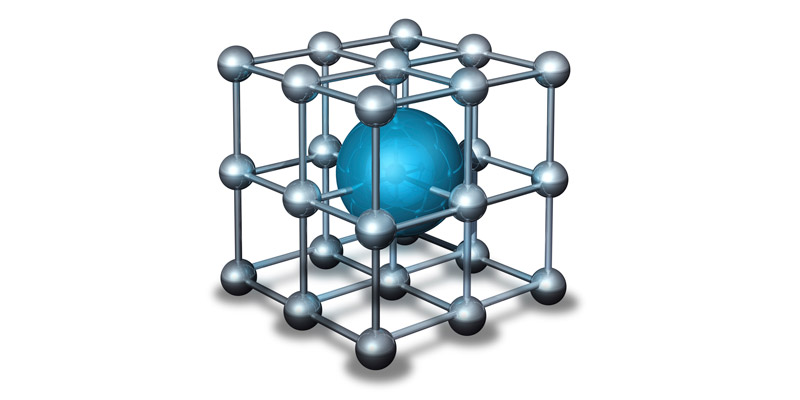Novel Polar Disinfection By-products and Health Risk Tradeoffs for Drinking Water Disinfection
Principal Investigator - Steve E. Hrudey, University of Alberta (2001-2004)

Challenge
For over a century, chemical disinfection of drinking water has been effective in preventing waterborne illnesses. However since the 1970s, it has been shown that common forms of water treatment produce by-products which may have negative impacts for human health. Epidemiologic studies have correlated life-long consumption of chlorinated drinking water with excess bladder cancer, as well as associations with adverse reproductive outcomes.
However, toxicological risk assessment of known disinfection by-products (DBPs) has not been able to attribute possible risk levels observed in epidemiologic studies to drinking water exposure levels for known DBPs, particularly the chlorinated DBPs like the trihalomethanes.
As the full range of disinfection by-products (DBPs) of chlorination and alternative disinfection processes are not known, it is necessary to study both the current and alternative forms of drinking water disinfection such as UV to determine the DBPs and their potential health outcomes. This research was designed to apply advanced analytical technology to characterize and identify DBPs in model waters as well as drinking water from different utilities.
This work can help assess health risks from DBPs in drinking water and guide the choice of disinfection processes for those responsible for drinking water quality, enhancing their ability to reduce the formation of harmful by-products and best invest resources to control DBP formation.
Project
Researchers compared DBP profiles from chemical disinfection (chlorination and/or chloramination) with physical (UV) disinfection and various combinations to help determine whether alternative water treatments form DBPs that are more or less harmful than those of chlorine. The initial research studies looked at the role of UV oxidation processes and their effects on DBP precursor materials, natural organic matter (NOM), and on the formation of DBPs where chlorine or chloramines are used after UV treatment. They produced factorial design experiments on the byproducts resulting from UV irradiation, UV/H2O2 advanced oxidation, and from post chlorination of UV-treated waters (natural water and model water).
The research then focused on nitrosamines as a plausible link to bladder cancer. Researchers identified various nitrosamines, some of which had not previously been identified in drinking water, as well as one better documented non-halogenated DBPs, N-Nitrosodimethylamine (NDMA). Further studies applied novel instrumentation called FAIMS (Field Asymmetric Ion Mobility Spectrometry), and other advanced analytical technology to characterize and identify DBPs in samples from drinking water distribution systems in Alberta – one using chloramination in combination with UV, and the other using only chlorination. Where one sample water utility had unusually high NDMA levels, researchers were able to determine some key factors in causing the NDMA formation. The team then performed an N-nitrosamine survey of water treatment plants in Alberta. NDMA was detected in 30% of distribution systems and mainly associated with facilities that chloraminated. Overall, Alberta NDMA distribution concentrations rarely exceeded the Ontario Drinking Water Quality Standards.
Researchers participated in testing their method through a U.S. round-robin, blind testing program of different analytical methods, and it performed very well. The work with novel DBPs demonstrated the ability of FAIMS and related advanced analytical techniques to identify a number of nitrosamines previously not reported in drinking water including MENA and NPyr, characterized at sub-ppt concentrations. This project demonstrated that ESI-FAIMS-MS/MS was capable of identifying compounds by providing information on several independent parameters making it possible for future work to identify currently unknown nitrogen-containing compounds present in drinking water.
Outputs
Development of several substantially improved analytical procedures for trace level detection of DBPs, including eight nitrosamines at relevant drinking water concentrations.
Select Presentations
Adedapo, R. and S.A. Andrews, 2004. Effect of Chlorination Following UV and UV/H2O2 on the Formation of Disinfection By-Products. Proceedings, Ontario Water Works Association-Ontario Municipal Water Association Joint Annual Conference, Niagara Falls, ON, May, 2004.
Arend, M.A. Charrois, J.W.A., Gabryelski, W., and Froese, K.L. 2004. Identification of N-Nitrosamines with ESI-FAIMS-MS/MS in drinking water at ng/L levels. Canadian Water Network 2nd Annual National Meeting. Ottawa, ON (June 20-22).
Boyd, J.M., and Charrois, J.W.A. 2004. Occurrence of trihalomethanes, haloacetic acids and nitrosamines in Alberta community drinking water. Faculty of Medicine and Dentistry’s 37th Annual Summer Students’ Research Day, University of Alberta. Edmonton, AB (October 23).
Charrois, J.W.A., and Hrudey, S.E. 2005. Detection, occurrence and risk assessment of N-nitrosamines in drinking water. Optimizing the Design and Interpretation of Epidemiologic Studies to Consider Alternative Disinfectants of Drinking Water, U.S. Environmental Protection Agency, Research Triangle Park, N.C. June 2-3, 2005.
Charrois, J.W.A., and Hrudey, S.E. 2004. Emergence of N-nitrosamines as disinfection by-products: a Canadian perspective. Canadian Water and Wastewater Association’s 11th Canadian National Conference and 2nd Policy Forum on Drinking Water. Calgary, AB (April 3-6).
Select Publications
Charrois, J.W.A., Arend, M.A., Froese, K.L., and Hrudey, S.E. (2004) Detecting N-nitrosamines in drinking water at nanogram per liter levels using ammonia positive chemical ionization. Environ. Sci. Technol.. 38:4835-4841.
Charrois, J.W.A., Graham, D., Froese, K.L., and Hrudey, S.E. (2004) Disinfection By-Products in Small Alberta Community Drinking Water Supplies. J.Toxicol. Environ. Health, Part A: 67: 1797-1803.
Gabryelski, W., Wu, F. and K.L. Froese. 2003. Comparison of high-field asymmetric waveform ion mobility mass spectrometry (FAIMS) with GC methods in analysis of haloacetic acids in drinking water. Anal. Chem. 75: 2478-2486.
Hofbauer, D.E.W. and S.A. Andrews, 2004. Influence of UV Irradiation and UV-Based AOPs on NOM Fluorescence Characteristics. Wat. Sci. and Technol.: Wat. Supply, accepted May, 2004.
Liu, W. and S.A. Andrews, 2003. Optimal Methods for Quenching H2O2 Residuals Prior to UFC Testing. Wat. Res., 37(15), 3697-3703.
Liu W., S.A. Andrews, C. Sharpless, M. Stefan, K.G. Linden and J.R. Bolton, 2002. Comparison of Disinfection Byproduct (DBP) Formation from Different UV Technologies at Bench Scale. Wat. Sci. and Technol.: Wat. Supply, 2(5-6), 515-521.
Wu, F., Gabrielski, W. and K. Froese. 2002. Improved gas chromatography methods for micro-volume analysis of haloacetic acids in water and biological matrices. Analyst, 127: 1318-1323.
Outcomes
- The project team partnered with water utilities and facilitated collaborative work with local public health authorities to address health risk management questions and identify the primary sources of the NDMA problem and appropriate solutions.
- This research will contribute to the development of risk management frameworks that integrate the identification of DBPs with relevant toxicity information.
- This project developed better interaction between DBP researchers, and improved efforts to translate research findings into drinking water regulatory policy. Specifically, the research results may be used to enhance drinking water treatment processes to reduce concentrations of DBPs of toxicological concern while maintaining microbially-safe and stable drinking water.
- Long term social benefits include the increased capability of municipalities to provide safer drinking water. These research results may also increase acceptance of UV-based and other oxidative disinfection technologies, leading to increased use of these technologies in the water treatment sector.
- The research outcomes offer the potential for substantial economic efficiency gains achieved by having DBP treatment requirements soundly based on evidence for adverse health benefits.
- The National Research Council provided a prototype FAIMS unit to demonstrate potential applications in water quality and environmental analyses. The research conducted in this project will aid the spin-off company, Ionalytics, to commercialize the FAIMS technology and achieve their business targets.




